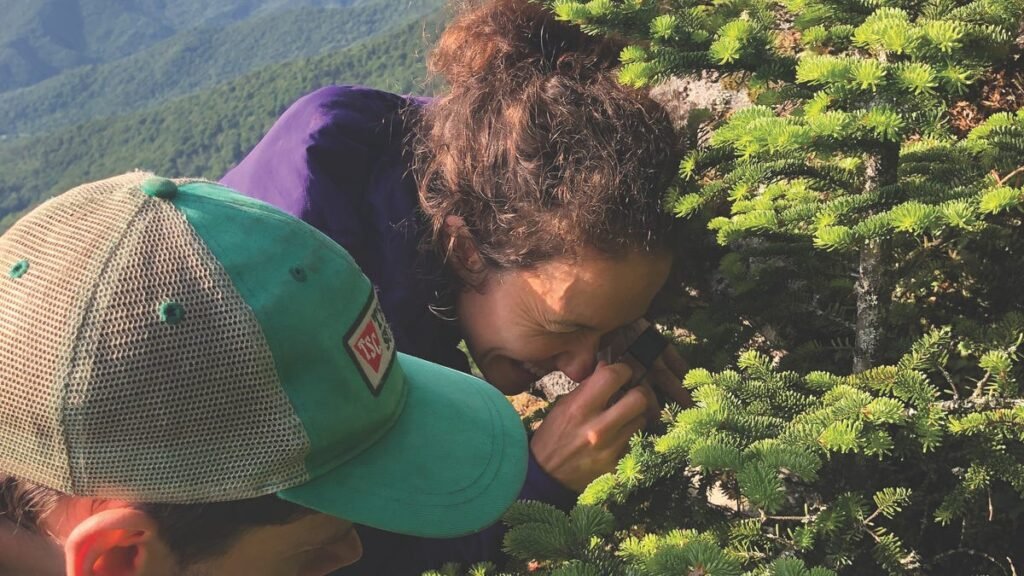Discovering the Hidden World of Lichens in the Great Smoky Mountains National Park
As I stepped onto the damp forest trail early this morning, the fog still clinging to the ancient trees of the Smokies, I couldn’t help but notice the splashes of color adorning the rocks and bark around me. These weren’t wildflowers or moss, but lichens – those fascinating organisms that exist in a world between fungi and algae, often overlooked by visitors rushing to spot bears or chase waterfalls.
For years, I’ve been wandering these misty mountains, documenting their wonders, but the lichens of the Smokies tell a particularly compelling story of biodiversity and discovery that’s only recently coming to light.
The Lichen Mysteries of America’s Most Visited National Park
When visitors come to explore Great Smoky Mountains National Park, they’re treated to a wealth of knowledge about the diverse plants and animals that call this place home. Yet, until recently, one remarkable group of organisms remained largely in the shadows – lichens.
It might surprise you to learn that many lichen species in the park were largely undiscovered until recent years. These remarkable life forms, existing as a partnership between fungi and algae or cyanobacteria, are finally getting the scientific attention they deserve.
What Makes Lichens Special in the Smokies?
I’ve spent countless mornings watching the sunrise from Clingmans Dome, but it wasn’t until I slowed down and looked closer that I truly appreciated the lichen diversity surrounding me. The Smokies’ unique geography creates perfect conditions for these organisms to thrive:
- The park’s vast elevation range (from 876 to 6,643 feet) creates diverse microclimates
- High rainfall and humidity provide ideal growing conditions
- Minimal development has preserved ancient trees and rock faces where lichens flourish
- The region’s geological history has created isolated “islands” where unique species evolved
The Scientific Treasure Hunt
Recent scientific surveys have revealed that the Great Smoky Mountains may be home to over 1,000 lichen species – a remarkable concentration of biodiversity. These studies are part of the broader All Taxa Biodiversity Inventory (ATBI), an ambitious effort to document every living species within the park’s boundaries.
What makes this discovery particularly exciting is how many of these species were previously unknown to science. Each foggy morning might conceal lichen species that no human has ever named or studied – a humbling thought in our increasingly documented world.
| Lichen Type | Description | Where to Find in the Park |
|---|---|---|
| Crustose | Crust-like, tightly attached to surfaces | Rocky outcrops, tree bark |
| Foliose | Leaf-like, partially attached | Trees, boulders along streams |
| Fruticose | Shrubby or hanging forms | Tree branches in high-elevation forests |
Why Lichens Matter to the Smokies Ecosystem
You might wonder why we should care about these small, seemingly insignificant life forms. As I’ve learned over years of exploring these mountains, lichens are ecological superheroes:
- They’re early colonizers that help create soil on bare rock
- Many species serve as sensitive indicators of air quality
- They provide food and nesting materials for wildlife
- Some fix nitrogen from the air, enriching forest soils
- They contribute to the park’s remarkable biodiversity
I’ve watched as park scientists carefully document lichen populations, knowing they’re tracking not just the health of these organisms but of the entire ecosystem. When lichens thrive, it’s a good sign the air is clean and the forest is healthy.
How to Appreciate Lichens on Your Next Smokies Visit
Next time you visit the Great Smoky Mountains, take a moment to look closer at these often-overlooked wonders. Here are my favorite trails for lichen spotting:
- Spruce-Fir Nature Trail near Clingmans Dome – The high-elevation spruce-fir forest hosts vibrant lichens on tree trunks
- Middle Prong Trail in Tremont – Look for lichens on boulders along the rushing stream
- Alum Cave Trail – The bluffs and rock faces support distinctive lichen communities
Remember to bring a magnifying glass or use your smartphone’s camera to zoom in – many of the most beautiful patterns are visible only up close. And of course, look but don’t collect – these lichens might be part of ongoing research projects, and they grow incredibly slowly.
Protecting the Lichen Legacy
As climate change and air pollution threaten these sensitive organisms, our appreciation and understanding of lichens becomes even more important. By supporting the park’s research efforts and practicing responsible visitation, we can help ensure future generations will still discover the wonder of finding a brilliant patch of lichen on a misty mountain morning.
The next time you visit the Smokies, take a moment to slow down and look for these quiet collaborators that have been part of these ancient mountains for millennia. They may not roar like bears or bloom dramatically like spring wildflowers, but the lichens of the Great Smoky Mountains tell a fascinating story of partnership, adaptation, and resilience that’s worth discovering.
Who knows? You might spot a species that scientists are still working to identify and name – a living testament to how much there is still to learn in this remarkable national park.
Source: Smoky Mountain News

